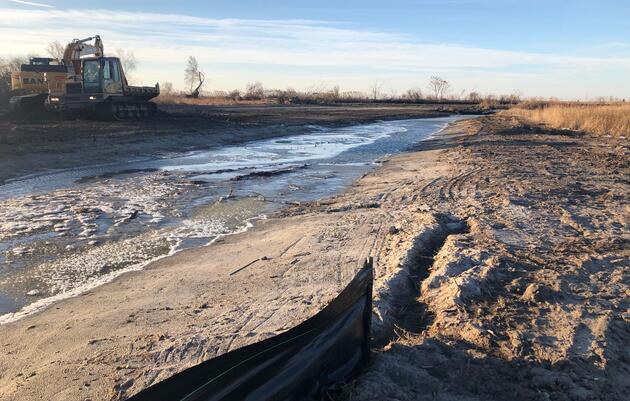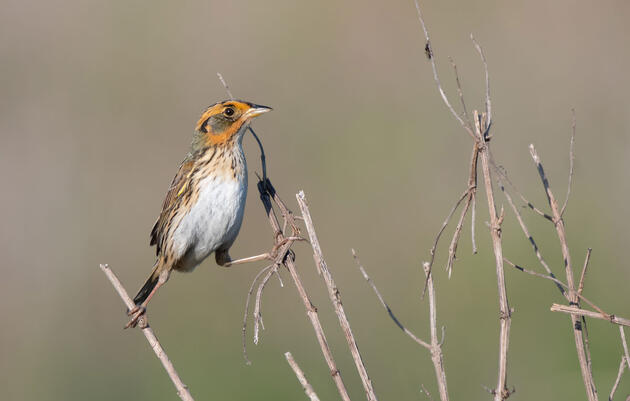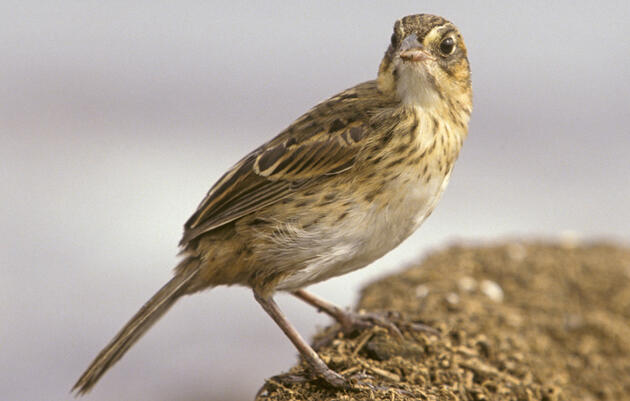This month, we have completed building the hummocks – mounds of dirt creating elevated islands within the Great Meadows Marsh. These hummocks will provide raised nesting habitat for Saltmarsh Sparrow. In the spring, we will plant high marsh grasses, including saltmeadow cordgrass (S. Patens) and saltgrass (D. Spicata), on the hummocks. Our hope is to see nesting on the edges of the hummocks in the next year or two
Salt marshes are vital for carbon sequestration, absorbing flood waters, providing habitat for animals. They are also where the Saltmarsh Sparrow nests – a species at high risk of going extinct due to rising sea levels. Saltmarsh Sparrows nest several inches above the high tide line on saltmeadow cordgrass (S. patens).
Dumping of dirt to create hummocks.
Nesting in the high marsh provides protection from predators, but it also means the nests can get washed out. Saltmarsh Sparrows are in a race to build their nest, incubate their eggs, and fledge their chicks before the next full moon brings the highest tidal levels. Now, the birds should be able to move their nests higher up on the hummocks mounds to avoid fatal flooding.
We are also excited to announce that we have received funding to expand the project’s impact! In this new phase, we’ll remove the top six inches of soil in an area upland of the marsh. This area is full of phragmites, an invasive species that out-compete the native salt marsh grasses. We will be seeding this area in the spring and likely doing additional planting in 2023 to create an additional 6 acres of high marsh.
Moving of dirt to create hummocks.
Know anyone who might enjoy volunteering for this big planting effort? Send them a link to subscribe to this email.








